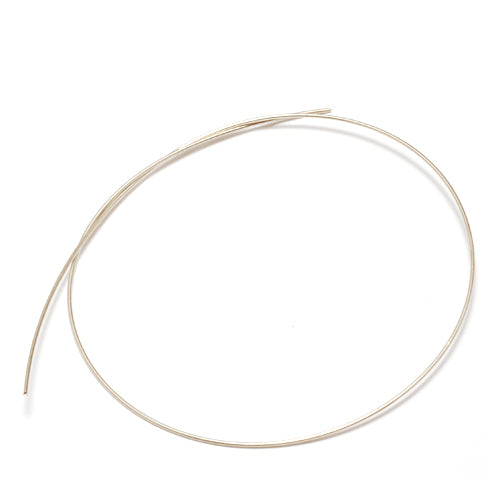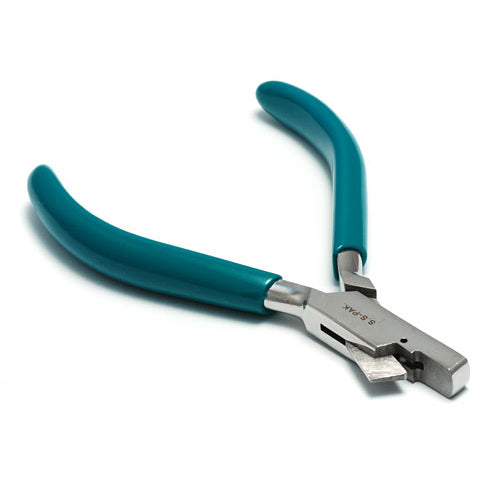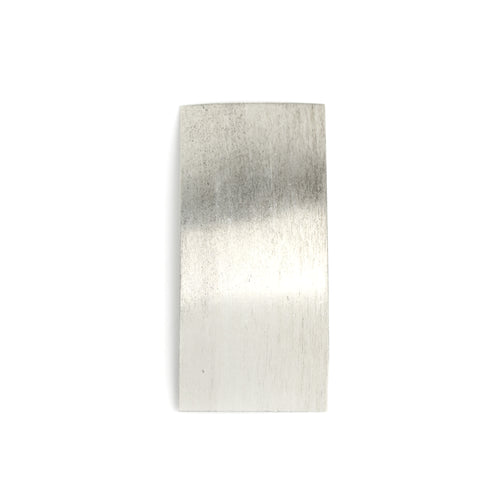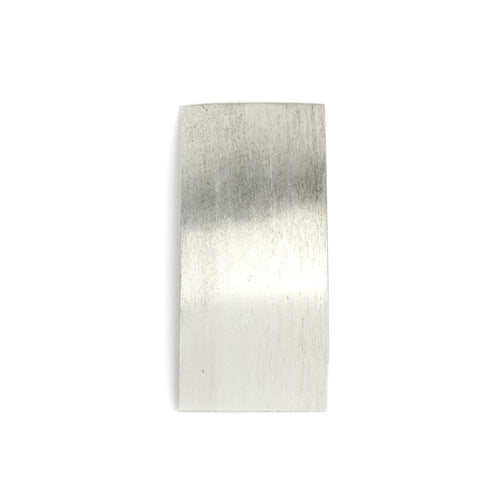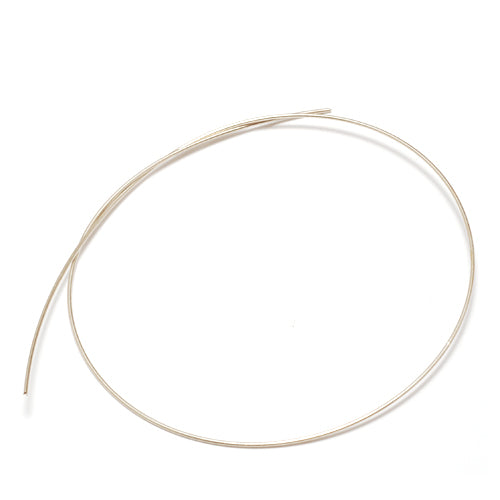How to Make Soldered Jewelry, Episode #1 - Intro to Tools and Materials
Welcome to Episode #1 of our How to Make Soldered Jewelry video series. This episode is strictly informational, we don't do any demos. We just list out the tools and materials needed and talk through the nuances of each. We also chat through some common "concerns" people have before venturing into soldering. Grab a cup of tea and a notebook and let's get started! >> Scroll down for the list of tools.
hey I'm Lisa Niven Kelly and the owner
of Beaducation.com and I am a shipper
Manske of ever nine jewelry and we have
come together here to teach a beginning
soldering series and this is going to be
a series of classes to help you the
beginning solder er that is holding a
torch at home but too scared to use it
doesn't know where to start
we're here for you and we're excited to
dive in so let's get started
[Music]
okay there's something I need to say
before we get her something I need to
say before we get started I don't you
know what you're gonna say you know what
I'm gonna say this episode is going to
be really long and really boring because
we're going to give you so much
information so in this episode it's just
tools and materials and talking about
that we don't slaughter anything we
don't turn anything on but we're gonna
start by talking about the core tools
you'll need and that's really it if you
don't want to be overwhelmed just stop
there and start moving through the
episodes but after that we're gonna go
into depth about other options and
things like that so if you hang with us
awesome
lots of cool information here like Lisa
was saying this section of the series is
a little long but I want you to bear
with us this it's like jam-packed full
of information that's really gonna help
you be successful in your soldering yes
so don't skip it especially we made this
series for beginners it's for our
customers have said I want to learn
soldering but I'm scared so actually
that's where we want to start we want to
start with tackling your fears
let's identify specifically what your
fears are yeah and I've talked to some
customers and let's start with burning
themselves yeah this is a big one this
is a big one I think people are solid
and definitely about I think people are
scared that the torch is the flame is
going to be a lot longer and larger than
it actually is yeah it's pretty small
it's pretty small and I think they're
afraid they're gonna just like drop the
torch sure so think that through I mean
all that seems like so obvious and all
that but you don't really drop stuff
okay so remember that your hands are
working well and I think that if you
turn your torch on and off a bunch of
times just to get used to how to use a
torch that might help like maybe hold it
not even on and hold like a soldering
pick of one or your torturer one hand
started picking the other and just kind
of practice with no flame on so you get
used to doing two hands together will
you think yeah turn the gas up turn the
gas down turn the gas up and the guns
down turn it off yes and we'll say it
later but I just want to mention cuz
right when you did that remind me never
put the torch down while it's on that
habit to get into even some of them come
with a great stand just turn it off
especially as a beginner so I was
thinking that maybe you could take your
torch outside if you're nervous and
literally turn it on and off and hold it
in your hand do a little small hand
dance and do that like 20 times do it
over your kitchen sink if you're nervous
or do it on your driveway just to get
used to handling the torch that will
make you so much more comfortable one of
the fears that my students voice to me
is the cost right yeah they're free
they're just gonna burn everything
everything and so part of me wants to
say just get over it yeah but that I'm
so simple and right it's easier said
than done remember that there is a
learning curve to learning to solder
yeah just like anything and you need to
honor that learning curve because we
talked about you want to run a marathon
you're gonna get up tomorrow and do it
you're gonna prepare and you're gonna
screw up and you're gonna get some
blisters
that sort of thing you want to learn to
play the piano saying it's gonna take
some time and probably a little
frustration totally yeah so I want you
now to accept that you're going to flub
up at least one of your projects at
least what I'm gonna say at least five
yeah let it go yeah be like okay there's
four I get one more you know and also
along those lines like when you're
starting out and you're making some of
the pieces in the series do two out of
copper like do it something inexpensive
along those lines with practicing what I
like to tell people is your first couple
pieces don't think it's something you're
going to wear proudly and put in the
Smithsonian like just just make it and
put it aside because you're just doing
the work like you're just learning the
technique and if you spend so long I'm
trying to get it perfect you're gonna
miss that practice part you know like
when what I teach stamping and like grab
two letters and stamp them over and over
again don't spell just get the technique
down now that we've discussed tackling
your fears what are we doing saying Lisa
well in the soldering series we're
covering a lot of stuff but let's just
first start with like a simple
description of what soldering is it is
connecting two pieces of metal using
heat and solder that's the simplified
version right mm-hmm but first things we
want to talk about though are some
golden rules yes the little bangles are
very very important so the first is
clean metal metal that is touching so
flatten flush together mm-hmm and
patience patience is key we're gonna pop
that one to number one yeah it's really
important and last and definitely not
least safety
guess what we're doing cover first we're
gonna cover safety because it's very
important you want to make sure to have
a first English your nearby and even
more important than not know how to use
it and have it serviced mm-hmm very
important you're also if you have long
hair like we do you want to tie it back
tie it back get it out of there and work
in a really well-ventilated area like a
room with windows have the window open
even better is to then have a fan that
sucks the air out of the room and
outside so turn it the other way maybe a
door open get the air flow you don't
want a big old breeze but get the air
flowing in there yeah and that work
surface that you're working on near that
open window hopefully yes is covered in
metal in some way you can use a cookie
sheet or have your work table card in a
sheet of Steel make sure there's nothing
nearby that it could accidentally light
on fire like steel wool
yeah our paper towels or notes things
like that you're also going to want to
wear a natural fiber yes wear natural
fibers and let's lock the kids and the
cats up and the dogs and the ferrets
just Richard that everyone has settled
someplace else when you go to use the
torch also when I start out I just
practice turning my torch on and off a
couple of times just three or four times
to get used to it get back in the groove
and all this safety stuff is so
important as that we've built a safety
checklist and I want you to print out
and keep nearby but not nearby where you
can light it on fire you can find that
in the tools and materials if you're
watching this video on our site or
they'll be linked down in the
description if you're watching on
YouTube
our core setup I should take it away the
first thing we're going to start with is
the kiln the brick kiln brick simple
inexpensive does the job handles the
heat that's a that should be maybe your
first purchase yeah second torch and
this is a max flame torch
it's very bushy it's a great torch and
it's great for beginners wonderful for
beginners wonderful lux this is Cooper
Nell
it's a spray-on flux we're gonna use it
throughout the series so you'll really
get a feel for how it works use it in
every project and that keeps your solder
it makes sure helps your solder flow
mm-hmm okay I'm just gonna grab these
items all at once here because they go
together whoops a solder pick and then
through our three favorites otters easy
aka soft medium and hard and in there
we've got little pal Ian's that we've
cut from solder sheet you can use a
solder we're gonna talk about that you
can use wire solder but that's just our
little solder sheet you need a quench
cup we sell them like this but you can
use a glass or Pyrex cut anything you
don't have to buy a fancy thing and to
get the fire scale off of your pieces
you're gonna need some sort of pickle
and we have spirits which is an acid
based pickle or citric acid which is
natural environmental version
another option is penny Braden which is
pretty cool we've sold this for a while
now this you don't need a pickle pot for
because it's just a paste look at this
and you just take your metal and put a
little bit on the sponge with some water
and dirt in your kit and this is
completely safe it's food grade you can
get it all over your hands sometimes I
wear gloves just because I like to keep
my hands from getting super dirty but it
works really really well now it says on
here that it doesn't work on sterling
but we've called the manufacturer and
they're like yeah actually it does it's
great it's fine
you'll also need yes safety glasses
glasses if you are totally a beginner
you're like ah there's so much just stop
here and start watching the projects yes
it's like you just need torch soldering
surface flux solder a cool cup a way to
clean your metal and with these the
pickle you need to pick a pot we use a
very small crock pot and with just that
including like the sterling and all that
you can make almost every project that
we're about to teach you but now we're
gonna get heavy-duty into stuff so this
is where it gets long but we are gonna
talk you through torches other torches
other pickles soldering surfaces all
kinds of stuff the deep dive let's get
into it
one of the golden rules is keeping your
metal clean while soldering and the best
way to do that after making sure it
doesn't have oil on it for some reason
or something like that a shin or
something like lotion that's good one is
to use flux flux is a key part of
soldering and in this series we're gonna
use cooper nail throughout this is one
of our favorites it's a spray flux it's
very very handy but we also talked a
little bit about handy flux which is
also handy dandy flux is what a lot of
us learn to use in school it's been
around forever yeah it is old school in
me I like it because it's kind of sticky
you know so you can put it on and put
your POW in there and we'll hold it
there but we should point out that it
gets kind of dried out sometimes just
pull the water in there and mix it up it
still works that's great let's talk
about our options for different
slaughters we carry sheet solder wire
solder and paste solder now wire solder
and sheet solder
are basically the same thing they're
just in a different shape they both
require flux to get them to flow in most
of the projects of this these the series
we use the sheet solder cut it into
little pal Ian's keep them in their
little jars you can also use paste
solder and we show that in one of our
classes and we've got a whole bunch of
classes on our website that Kate
Richburg teaches and she uses paste
solder in those as well the solder that
you carry here at beach occation is soft
medium and hard soft aka easy kind of
interchangeable and you might say what
are the differences between those three
right so easy solder is going to flow at
the lowest temperature heart is going to
flow at the highest temperature and
medium of course right in the middle
right meet right in between they're
great because they have different
characters to them right so hard is
going to be the strongest bond with the
closest color match to sterling silver
because it has the high
research percentage of silver in it cool
and easy has the lowest so it's gonna be
the most yellow out of the three okay
but for example if you are soldering you
know a jump ring on the end of a clasp
and you need to just get in and get out
fast using easy is wonderful perforate
ya hard would be perfect for something
like making a ring with like a big seam
you want to get super super strong yeah
so you probably want to have a variety
of the solder of the different temps on
hand because when you do a multi-step
solder job that's when you would use a
different ones so let's say I was
soldering a bezel to a blank like we do
in one class and then some solder bowls
to it and then a jump ring on the back
and if that's three different steps
first step will be done with hard the
next step will be done with medium and
the last step will be done with easy the
point is that when you do that last step
that the easy solder is gonna flow
pretty quick and you're not gonna rip up
the other two steps
you're gonna sense yeah so I should of
all of those if you're only gonna use
one solder do you have like a go to my
go to is medium yeah it's always good to
choose kind of the middle-of-the-road if
you're just going for one solder joint
let's talk about our torch options so
there are definitely more professional
torches out there but the ones we're
gonna talk about today and the ones that
we use in this series are simple butane
torches that are great for the beginner
the max flame is a torch that we use
most often in this series it offers a
very large bushy flame yeah
oh she like it cover lots of areas which
kind of causes problems sometimes if you
want to be more pointy in which case we
switched over in a couple of the
episodes to the Blazer and the micro
flame which we still have in the package
there is also kind of pointy this is our
least expensive torch but a really big
seller and it lasts really well and you
can make creme brulee with these right I
have I have both do yeah I have those
well I have three they were great they
weren't great the cast you want to use
with all of these torches is butane and
for
let's go ahead and put these on we fill
to fill them they'll fill the same they
each have a little hole in the back and
you turn it upside down you want to do
this outside and take your gas and put
it right over there and just press down
here it go and when you'll know it's
filled because it'll like start
spreading a little bit could you guess
down I blow it and then don't use this
for like a minute or so just to make
sure all the fumes of the gas in the air
are way and then you're good to go
if you are working on a big project just
get in the habit of filling it because
I've had it happen so many times where
the gas runs out and you're it's about
to flow and you're like please play this
and then you have to start all over so
it's good happy soldering surfaces are a
really important part to this whole
thing Lisa you can't just solder on a
brick you find in your backyard or a
pizza stone or pizzas down or your
kitchen tables not gonna work very well
not so good so let's review three great
soldering service choices okay we did
mention in the core tools and materials
of the kiln brick this kiln brick is
like the all-in-one yeah all-in-one tool
it's great for almost everything then
there is the charcoal block yes yeah but
yeah charcoal block is great if you are
using a small torch and you're making a
project that's maybe a little big for
the size torch you're using it reflects
the heat and hey don't open them so what
that means is well your piece is laying
on the charcoal block and you're heating
it with the torch the charcoal reflects
the heat back into the piece so for
example if you were soldering a bangle
bracelet oh yeah like a big one with the
max flame and you had it on the kiln
brick and it the solder just wasn't
going you know it just wasn't flowing
you might want to switch up your service
and use the triple block I like the
charcoal block so the kiln brick is kind
of beginner and the second next step up
yep and then one
yup and then one more step up let's see
if we came to fit this in the frame whoa
this is a soldering tripod mm mm screen
mm-hmm with a screen this is really nice
when you want to heat your piece from
below in the stone pendant section of
this series we'd use this tripod so you
can really see how it works I really
like boys I like it so beginners start
with kiln brick and the tripod and the
charcoal block is possible upgrades
mm-hmm maybe intermediate advanced level
some of you may be wondering why we keep
talking about pickles I love pickles and
we're not talking about dill pickles
kosher pickles we're talking about the
pickle that you'll need to clean your
metal when you get the oxides pulled to
the top which is also known as fire
scale or fire steam that's why fine
silver doesn't get this because it has
no copper in it but to get that off is
quite difficult and a pickle does the
job for you it's great so you tell us
about that one sure this is sparox
sparox is a late acid the way that you
use it is you dilute it in water in a
pickle pot which is a way of saying a
crock pot yeah like a little small crock
pot and you just follow the instructions
on the back of the package to mix this
sparox is the most harsh of the pickles
that we're gonna talk about today I use
this in my studio because I'm a
production jeweler and I need things to
turn around really fast quick quick
because it is a late acid and because
your pickle pot will eventually be full
of copper oxides because as this is
cleaning the metal it's actually
cleaning the copper oxides after the
surface of the metal and now they're
floating around inside that bath so that
bath needs to be neutralized and the way
that you do that is you add baking soda
to the bath until it no longer bubbles
this may take quite a while okay so once
it stops bubbling you can pour that
liquid into a container like a plastic
Rubbermaid kind of container yeah well
cheap and just put it away somewhere and
allow the liquid to evaporate
once it's evaporated you're then going
to want to dispose at the remaining
material as you're at your hazardous
waste disposal
yeah let's do it the right way yeah but
for that I mean it lasts a long time and
as the water evaporates you just add
more water and more pickle I mean how
often do you change your pickle pot I
didn't change me I'm hot for three years
I only changed it because I moved yep so
it lasts a long time and the same goes
for the citric acid this one is a more
environmentally friendly one it does the
same thing as farik's except slower but
you would dispose of it in the same way
that you would spare it's because of the
copper oxides in there I'm a little bit
of a safety nerd I like it
I know so say it so when I take my
pieces out of my spare ex pickle pot I
actually neutralize the piece in a
baking soda bath yeah that's important
and it's just to make sure that all the
acid is neutralized right so I just take
some just baking soda that you use for
baking
I don't bake you know that some people
use for baking and dilute it in water
and my educated guess is that it's about
one tablespoon to about three cups of
water and you'll notice when you place
the piece into the bit into this bath
that it kind of bubbles in me and you
know it's yeah so out of the pickle
rinse rinse in there give it a little
rinse and some fresh water and you're
good to go you got it
when soldering brass it may be a little
surprising when you take your piece out
of the pickle pot that is now copper
yeah it comes out copper color it's
either magic or a total disaster and can
be quite upsetting so what that is is
the copper in the brass comes to serve
the surface of the metal when you heat
it with the torch mm-hmm and now you
have a thin layer of copper on the
surface of your brass at least I know
that you have a handy recipe yes and we
have it on the soldering page on our
website under the frequently asked
questions but I'll read it to you here
you want to soak the piece in two parts
hydrogen peroxide just the kind you get
at the drugstore and three parts white
wine white wine
and three parts white vinegar and that
will remove the copper from the top and
be patient it takes 30 to 60 minutes for
the metal to come back to a nice yellow
brass color and I do use this pickle so
so you know what you're looking for
they'll like little air bubbles will
attach to the surface of the metal
mm-hmm and you want to make sure that
the like the whole surface of the metal
is exposed to the liquid so if your
blank is down at the flat it like at the
bottom of the bowl it won't clean the
bottom oh god I feel like maybe I drop
it up against the side and it comes out
a little bit hazy you just polish off
ring and then you're back you're back
glass you're good to go
we do get the question can you solder
silver filled and gold filled and the
answer is I don't recommend it you can
do go fill if you're very careful and
use a very low flame silver filled seems
to just kind of bubble so what happens
is although that's a really thick tight
bond of gold or silver on the core
you're heating it a little much and it
starts to kind of release it from the
core and then if you have to do any
finishing work you could further remove
the clad yeah bad news
[Music]
there you go okay
and I Lou it over one oh you're looking
this is really intimate okay

